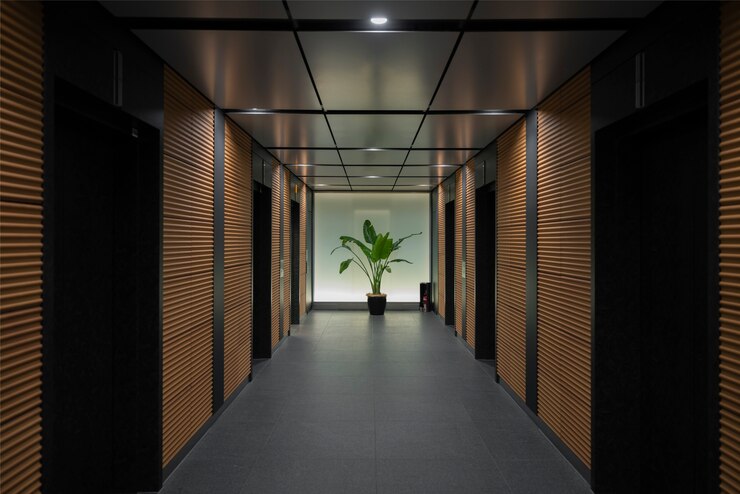In the rapidly evolving landscape of warehousing and logistics, space optimization has emerged as a critical factor for success. With e-commerce booming and consumer expectations soaring, warehouses are under pressure to enhance efficiency and maximize storage capacity. One solution that has gained significant traction in this environment is the implementation of industrial mezzanine floors. These structures not only provide additional space but also create a versatile environment conducive to modern operational demands.
Understanding Industrial Mezzanine Floors
Industrial mezzanine floors are intermediate levels built between the floor and ceiling of a warehouse or manufacturing facility. They are designed to increase the usable area without the need for extensive construction or relocation. Typically constructed from steel or concrete, these mezzanine systems can support heavy loads and are engineered to meet specific operational requirements. This flexibility makes them an ideal choice for warehouses that require dynamic storage solutions.
The concept of a mezzanine floor is not new; however, its application in industrial settings has evolved over the years. Today, businesses are leveraging mezzanines to create more than just storage space. They are being utilized for various functions such as additional office space, picking areas, or even break rooms for employees. This multifunctionality speaks to the adaptability of industrial mezzanine floors in meeting diverse operational needs.
Space Optimization and Efficiency
One of the most compelling arguments for incorporating industrial mezzanine floors into warehouse designs is the significant increase in space efficiency. Traditional warehouses often struggle with vertical space utilization, especially in older facilities where the ceiling height may not be fully utilized. Mezzanine floors effectively address this issue by providing a platform that can be used for storage or operational activities.
For instance, a warehouse with a high ceiling can install a mezzanine level to store products that are not frequently accessed, freeing up valuable ground-level space for more critical operations. This reconfiguration of space allows for improved workflow and can result in a more streamlined picking and packing process. As a result, warehouses can handle larger inventories without the need for costly expansions or relocations.
Moreover, in a time when real estate prices are continually rising, maximizing existing space is a financially prudent move. Investing in industrial mezzanine floors can yield substantial returns by enhancing productivity and reducing overhead costs associated with leasing or purchasing additional square footage.
Flexibility and Customization
Another advantage of industrial mezzanine floors is their remarkable flexibility and the customization options they offer. Unlike permanent structural changes, mezzanines can be designed to suit the unique needs of a business. This adaptability means that businesses can modify the layout or purpose of the mezzanine as their operations evolve.
For example, a warehouse that initially uses a mezzanine for storage can later repurpose it for office space or assembly lines as the business grows. This capacity for change is particularly valuable in industries that experience fluctuations in demand or seasonal variations. Companies can quickly pivot without incurring the costs or delays associated with traditional construction.
Furthermore, mezzanine floors can be equipped with various features such as shelving, conveyor systems, or lifts to enhance functionality. This level of customization ensures that the mezzanine serves its purpose efficiently, aligning with the specific operational goals of the warehouse.
Cost-Effectiveness and Quick Installation
Implementing industrial mezzanine floors is often more cost-effective than constructing an entirely new facility or expanding an existing one. The cost of building a mezzanine is substantially lower than the expenses associated with acquiring new land or undertaking extensive renovations. Additionally, due to their modular nature, mezzanine systems can be installed relatively quickly, minimizing downtime and disruption to operations.
This rapid installation process is particularly advantageous for businesses that need to respond swiftly to market demands. In a world where agility can determine a company's success, being able to expand storage capacity or alter workspaces without lengthy construction delays can provide a competitive edge.
Moreover, the durability of mezzanine structures contributes to their cost-effectiveness. Made from robust materials, these floors are designed to withstand the rigors of industrial use, ensuring that the investment remains viable over the long term. This longevity further cements the financial prudence of incorporating industrial mezzanine floors into warehouse designs.
Enhancing Safety and Compliance
While the primary focus of industrial mezzanine floors is often on space optimization and efficiency, safety should never be overlooked. Properly designed and installed mezzanine systems adhere to stringent safety standards and regulations, ensuring that they provide a secure environment for workers and stored goods alike.
Safety features can include guardrails, non-slip surfaces, and adequate lighting, all of which contribute to minimizing the risk of accidents in the workplace. Additionally, mezzanines can be designed with load-bearing capacities that meet or exceed industry standards, mitigating the risk of overloading and potential structural failures.
Furthermore, the strategic placement of mezzanine floors can enhance the overall flow of operations within a warehouse. By segregating different functions—such as storage and office space—businesses can create safer environments that reduce the likelihood of accidents involving foot traffic and machinery. This emphasis on safety not only protects employees but also helps businesses maintain compliance with occupational health and safety regulations.
Conclusion: The Future of Warehousing
In conclusion, industrial mezzanine floors are not merely a trend; they represent a fundamental shift in how warehouses operate in the modern landscape. As businesses strive for efficiency, flexibility, and cost-effectiveness, the implementation of mezzanine systems offers a viable solution that meets these demands. From optimizing space to enhancing safety, the benefits of mezzanines are numerous and far-reaching.
As the warehouse industry continues to evolve, those who embrace innovative solutions like industrial mezzanine floors will be better positioned to thrive in a competitive marketplace. By maximizing existing resources and adapting to changing needs, organizations can create a more efficient, productive, and safer working environment. The future of warehousing is here, and it is layered with possibilities—quite literally.





Comments